11 Most Asked B2B Brand Strategy Questions Answered
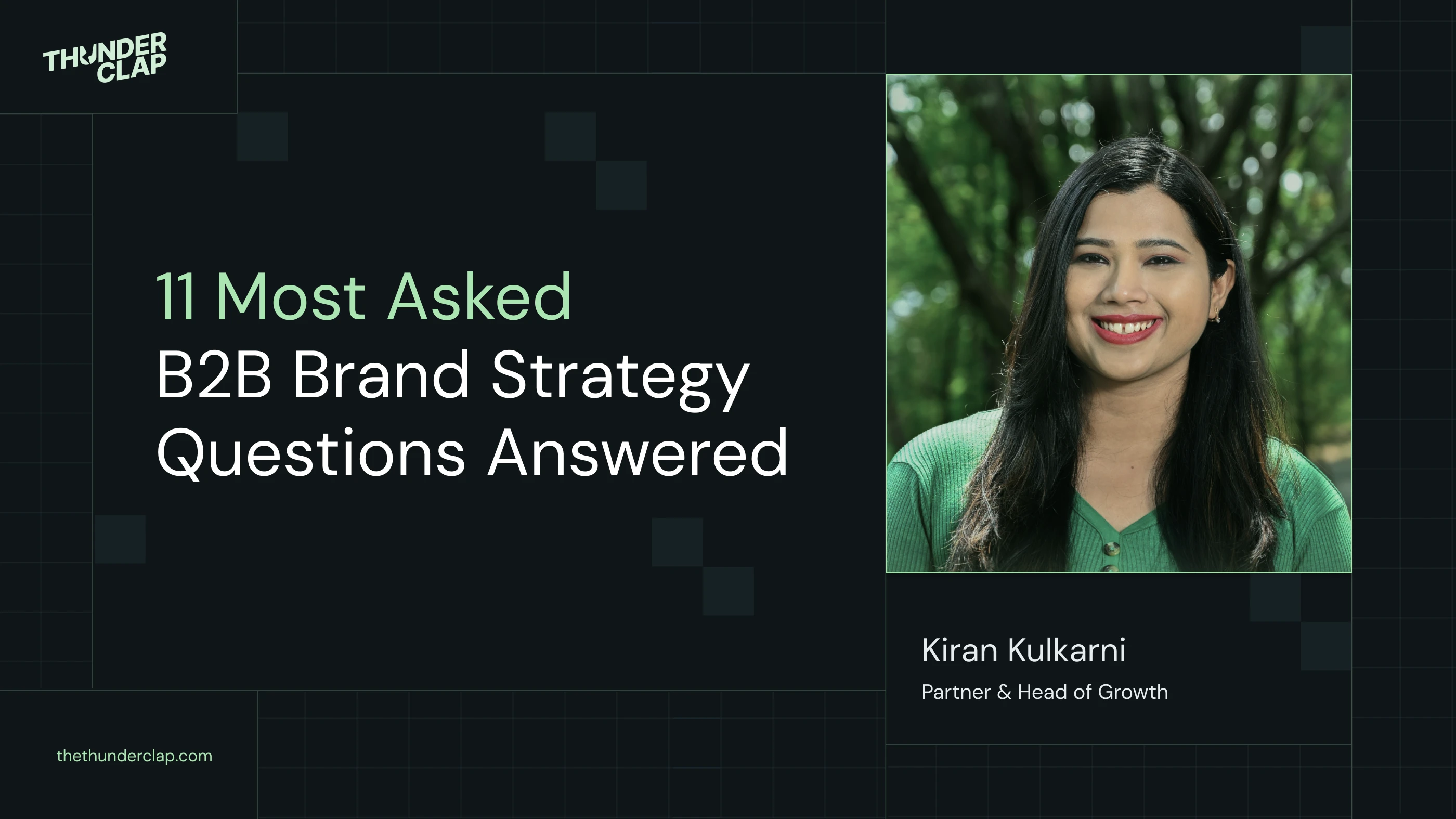

An exclusive conversation with Kiran Kulkarni, Partner & Head of Growth at ThunderClap, on building brand strategies that drive real business results.
Thunderclap is an award-winning B2B website revamp agency has helped over 129 B2B companies—from fast-growing startups to enterprises like Amazon, Razorpay, and Storylane build websites that drive measurable results.
We sat down with Kiran to discuss what it really takes to build a B2B brand strategy that creates a sustainable competitive advantage and why most companies might be approaching it wrong.
Let’s get started!
1. Many B2B leaders still see branding as a 'nice-to-have' rather than a business necessity. What's your take?
Kiran - “This mindset is exactly why so many B2B companies get trapped in endless pricing wars. When you compete solely on features and price, you're essentially commoditizing yourself. And commodities always get squeezed on margins.
The companies that break free from this cycle understand that brand isn't about having a prettier website, though that helps. It's about owning a distinct position in your prospects' minds that makes you the obvious choice when they have a problem you solve.
I've watched this transformation happen firsthand. Take our client ConsultAdd we helped them boost website enquiries by 60% not just through design, but by clarifying their brand positioning and making their value proposition crystal clear. When prospects understand exactly why you're different and better, price becomes much less of an issue.”
2. "What is a B2B brand strategy, and how does it differ from tactics like content marketing or demand generation?"
Kiran - “I see this confusion all the time. A B2B brand strategy is your master plan for how you want to be perceived, remembered, and chosen in the marketplace. It's the strategic foundation that everything else builds on top of.
Think of it this way: Content marketing is what you say. Demand generation is how you reach people. Your website is where they experience you. But brand strategy? That's who you are in the market's mind and why you matter.
Here's what I tell our clients at ThunderClap: Your B2B brand marketing strategy needs this strategic foundation. Without it, your content becomes random noise, your demand generation attracts the wrong people, and your website (no matter how beautiful) won't convert because visitors don't understand your unique value.
We see this when companies come to us wanting "just a website redesign." But if we don't first clarify their positioning and value proposition, we're just putting a fresh coat of paint on a confused foundation. That's why our process always starts with brand or website strategy before we touch any design work.
Take ClearlyRated, for example. They came to us for what they thought was a simple website refresh. But during our brand audit, we discovered some interesting opportunities.
They had multiple CTAs that were creating decision paralysis for visitors, and their value proposition around making feedback actionable wasn't coming through clearly enough.
Once we clarified their brand positioning around being the trusted voice for employee feedback and consolidated their multiple CTAs, everything clicked.”
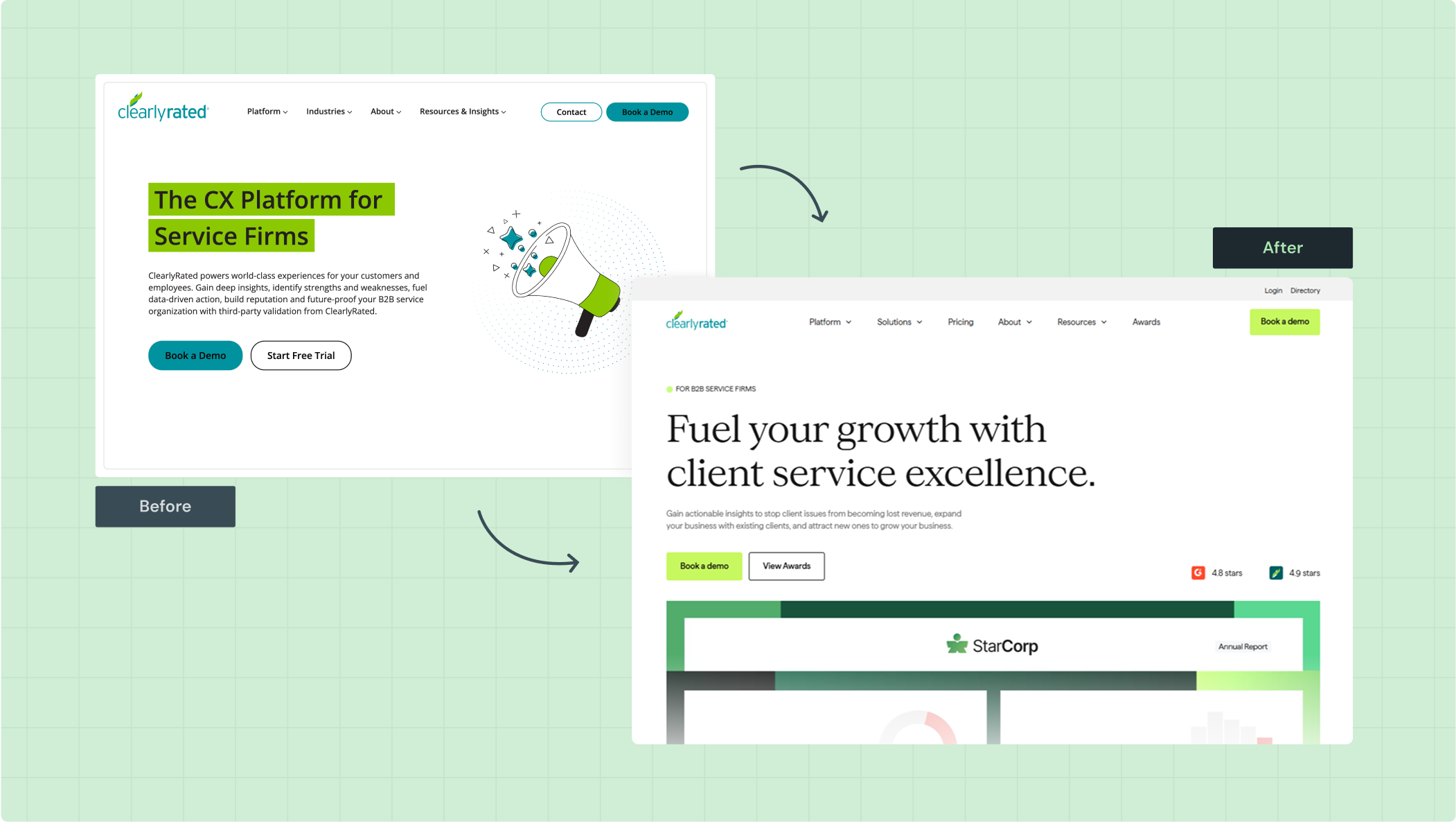
Also read: 5 B2B Branding Strategies with Examples from Top Brands
3. "How do you differentiate your brand when everyone claims to be 'innovative' or 'industry-leading'?"
Kiran - “You're absolutely right, generic positioning is everywhere. ‘Best-in-class,’ ‘cutting-edge,’ ‘revolutionary’ - these words have lost all meaning because everyone uses them.
The key is finding your ‘unique POV.’
Most B2B companies define their competition too narrowly. They look at direct competitors and try to be incrementally better. But the real competition isn't just other software companies, it's the status quo.
When we work with clients at ThunderClap, we help them identify the bigger transformation they're enabling. Take Storylane, for example. Their journey with us started with their website 'not having a personality' in the words of Madhav, their Head of Marketing. Now, the brand book we've built for them serves as a foundation for everything memorable they're trying to do.
Even though they're newer to the game compared to established players like Navattic and Walnut in terms of revenue, they've been able to create a highly differentiated brand through unconventional initiatives like Demo Dundies, Demo-led SEO, and other creative campaigns that make them stand out in the interactive demo space.
The breakthrough comes when you stop trying to be incrementally better and start reframing the problem entirely.
4. "How do you get leadership buy-in for bold positioning that challenges industry norms?"
Kiran - “You speak their language: revenue impact and competitive advantage. Every marketing leader we’ve worked with cares about shorter sales cycles, higher win rates, and the ability to command premium pricing. Those are exactly the business outcomes that strong brand positioning delivers.
But here's what I tell leadership teams: Brand building is like compound interest. You can't expect immediate results on a performance marketing timeline.
If you're measuring brand ROI in quarters, you're going to be disappointed and likely kill good initiatives too early.
What we do at ThunderClap is run dual tracks.
We keep short-term demand generation and conversion optimization running to hit immediate goals while building the long-term brand foundation. We track leading indicators like brand awareness, and consideration metrics alongside conversion numbers.”
5. “Let's get tactical. What does the actual process of building a B2B brand strategy look like?”
Kiran - “At ThunderClap, we use a five-layer approach that we've refined over hundreds of web redesign and rebrand projects.
Layer 1: Market Reality Audit
This is brutally honest market analysis. Who are you really competing against? What do prospects actually think about when they have the problem you solve? What's the cost of inaction? What are the switching barriers?
Most companies skip this step and base their strategy on internal assumptions. That's why their positioning misses the mark completely.
Layer 2: Strategic Positioning
This is where you define your unique angle. What transformation are you enabling? What's your "enemy"? What future are you trying to create?
Take Deductive, for example. They started with generic positioning around turning telemetry data into a 'Thinking Machine' and having 'the most brilliant engineer at your fingertips.'
We made it more outcome-focused and super relevant to developers now they own 'No More Root Causing in the Dark' and position themselves as the solution that 'pinpoints root causes with the precision of an experienced engineer
Layer 3: Message Architecture
Once you know your position, you translate it into clear, compelling messaging. This includes your core value proposition, supporting pillars, proof points, and objection handling framework.
Layer 4: Brand Personality & Voice
How do you want to sound? What personality traits should you embody? This should align with your audience's preferences and reinforce your strategic position.
Layer 5: Digital Activation System
This is where strategy meets execution. Your website becomes the primary vehicle for expressing your brand strategy. Every page, every interaction, every conversion point should reinforce your positioning.
This last layer is crucial, and it's where most agencies stop at just ‘making things look pretty.’ We optimize for both brand expression and conversion performance.”
As Ankita Chaturvedi, GTM Expert at Shopline, put it: "ThunderClap dove deep into the research for our product, from strategy to design and development, all with a sharp focus on CRO. We couldn't have asked for better partners."
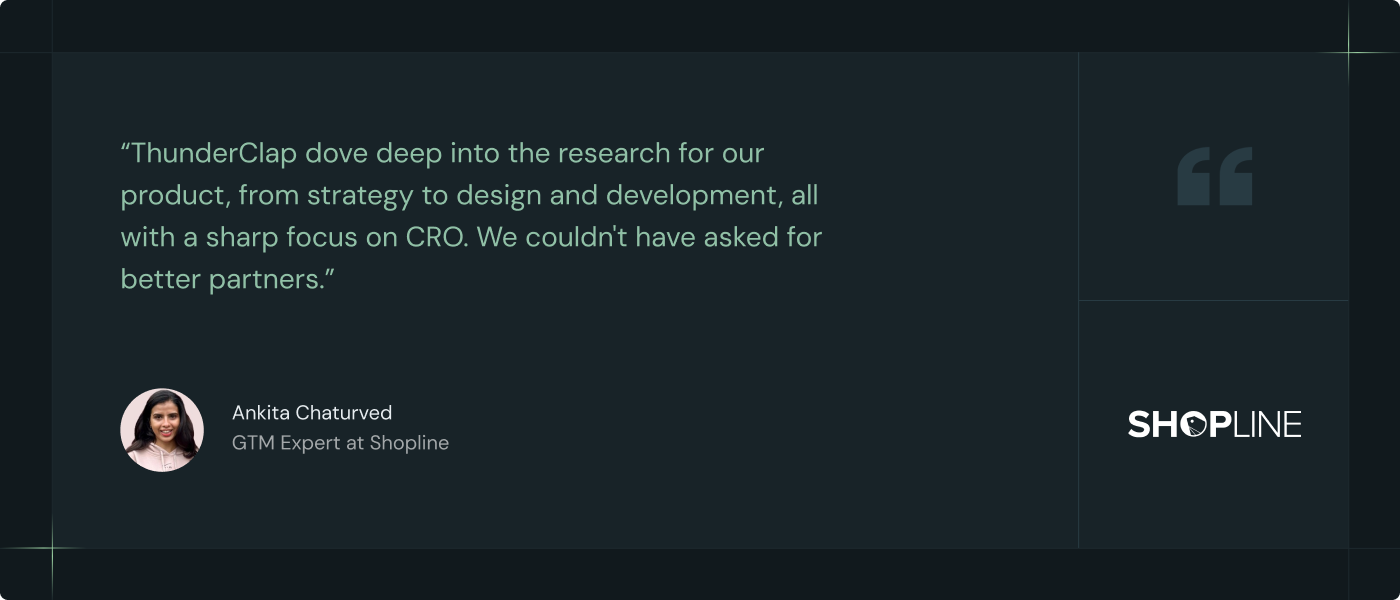
6. “Speaking of measurement, how do you track the ROI of brand investments?”
Kiran - “This is where most B2B marketers get stuck. They try to measure brand impact the same way they measure performance campaigns, and it doesn't work.
At ThunderClap, we track what we call the "Brand Performance Triangle":
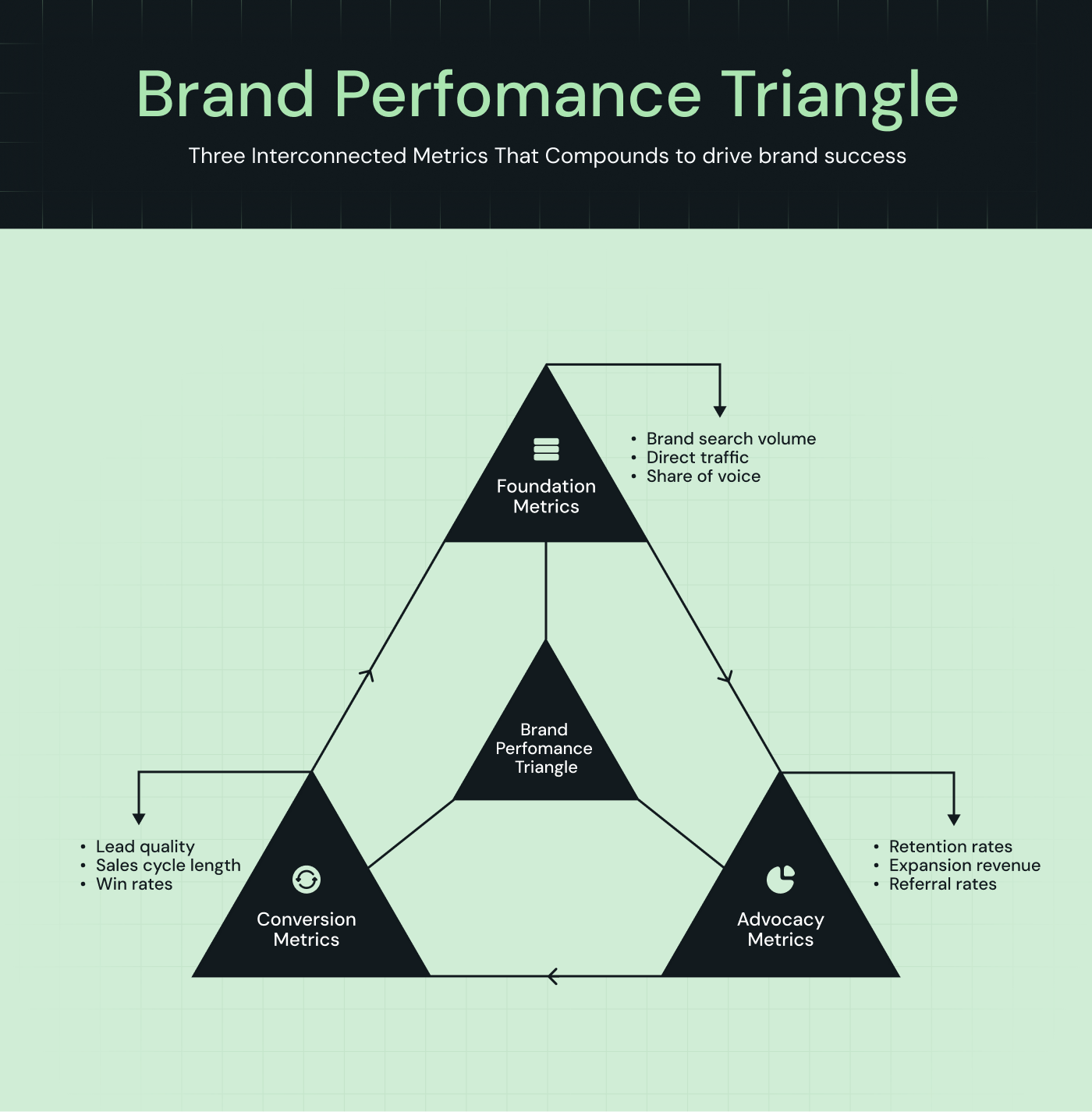
- Foundation Metrics: Brand search volume, direct website traffic, social media mentions, share of voice in industry conversations. These are core components of any effective B2B brand awareness strategy, indicating whether your positioning is breaking through.
- Conversion Metrics: Inbound lead quality, sales cycle length, win rates, average deal size, customer acquisition cost. These show if your brand is actually driving business results.
- Advocacy Metrics: Customer retention rates, expansion revenue, referral rates, employee advocacy on social media. These show if your brand creates lasting value.
The magic happens when these metrics compound. Higher awareness drives better consideration, which drives stronger advocacy, which drives more awareness. It's a flywheel effect.”
7. “What about smaller B2B companies? Can they compete with established brands on limited budgets?”
Kiran - “Absolutely. Smaller companies often have advantages that bigger brands can't match - speed, authenticity, the ability to take bold positions without committee approval, and experimentation without the fear of going wrong. That's one of the advantages we have at ThunderClap.
The mistake smaller companies make is trying to compete on the same playing field as established brands. Don't try to outspend them on advertising or content volume. Instead, outposition them.
Here's what I recommend: Find a specific niche where you can be the definitive expert.
This focused approach is often more effective than broad B2B brand awareness strategies that larger companies use, allowing you to dominate mindshare in your chosen segment.
{{specficBlog}}
8. “Let's talk about common mistakes. What are the biggest branding errors you see B2B companies making?”
Kiran - “The biggest mistake is treating branding as a design project rather than a business strategy. I see companies spending months perfecting their logo while their value proposition remains unclear and their website messaging is confused.
Another major error in any B2B brand marketing strategy is the "appeal to everyone" trap. They're so worried about alienating prospects that they end up with generic messaging that excites no one. Strong brands have clear boundaries. One of my favorite examples of this is
I also see companies changing their brand strategy every six months based on short-term performance. At ThunderClap, we tell clients upfront: brand building requires patience and consistency. You can't expect to see transformational results in the first quarter.
But perhaps the most costly mistake is the "website as brochure" mentality. They treat their website as a digital business card instead of a conversion engine. Your website should be the primary expression of your brand strategy and your hardest-working salesperson.
When we redesign websites for clients, we're not just making them prettier, we're optimizing every element for both brand expression and conversion performance. You can check out some of our latest work.
Finally, there's the "set it and forget it" approach. Your brand strategy needs to evolve as your company grows and the market changes. But evolution doesn't mean reinvention every quarter—it means thoughtful adaptation while maintaining your core identity.”
9. “How do you translate your brand strategy into a cohesive digital experience?”
Kiran - “Our brand strategy should be the foundation that informs every digital touchpoint, but it can't just be theoretical—it needs to drive measurable business outcomes.
At ThunderClap, when we work with clients, we don't just create brand guidelines that sit in a folder. We translate that strategy into a cohesive digital experience where every element works together to guide prospects toward conversion.
Take Rezolv, a fintech platform we worked with, for example. When they approached us, they had a working product but no logo, branding, or website.
While they had deep technical knowledge of payment collection solutions, they needed help explaining their complex product in simple terms to banks and financial institutions.
We developed their complete visual identity from scratch, crafted their website strategy and messaging, then designed and developed their site to translate their technical sophistication into clear, digestible communication.
Every element from the clean typography to the simplified product illustrations reinforced their positioning as the authoritative yet approachable solution for modernizing payment collections. The result was a cohesive brand experience that helped them successfully raise significant funding.
10. “Looking ahead, how do you see B2B branding evolving?”
Kiran - “I think we're entering an era where authenticity and substance matter more than ever. B2B buyers are incredibly sophisticated now. They can spot generic positioning and empty promises from a mile away. The brands that win will be the ones that have something genuinely valuable to say and the courage to say it clearly.
But here's what's equally important - the way something is communicated. B2B has been boring for a very long time.
A strong B2B brand strategy that creates good recall will always give you competitive advantage. This becomes your defensible leverage when everyone else is competing on features and price.
Finally, I think AI and automation will make authentic human connections even more valuable. As more interactions become automated, the human touchpoints become more important.
Brands that can create genuine connections through their positioning, their content, and their customer interactions will stand out more than ever.”
11. “Any final advice for B2B leaders thinking about their brand strategy?”
Kiran - “Start with why you exist beyond making money. If you can't articulate why the world genuinely needs your company, you'll struggle to build a compelling brand. Your purpose has to be bigger than your product.
Be patient but persistent. Brand building is a marathon, not a sprint. But when you get it right, it creates a sustainable competitive advantage that's incredibly hard to replicate.
Don't separate brand strategy from business strategy. Your brand should be an expression of your business strategy, not a marketing afterthought. At ThunderClap, our most successful clients are the ones where the CEO and leadership team are actively involved in the brand strategy process.
And remember: Your brand is what people say about you when you're not in the room. Make sure they're saying something worth repeating.”
{{ctaBlock}}



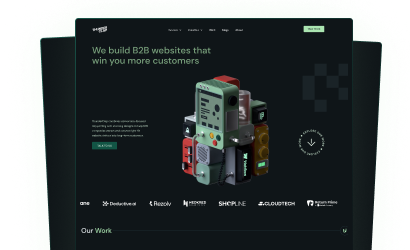

Browse Similar Articles




Interested in seeing what we can do for your website?





.webp)











.svg)

.png)
















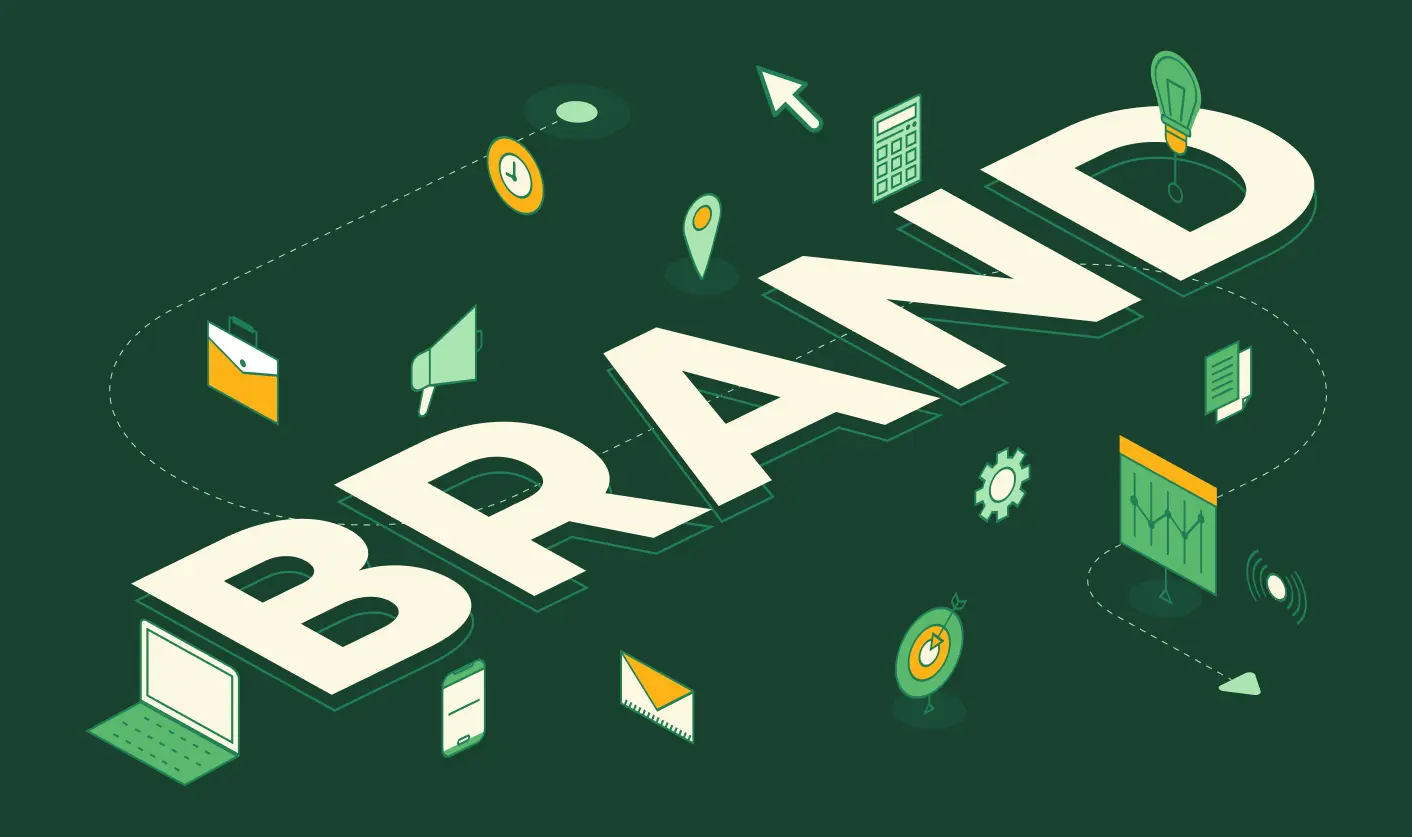
























































.png)